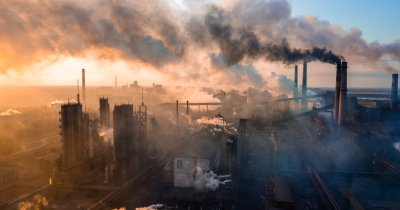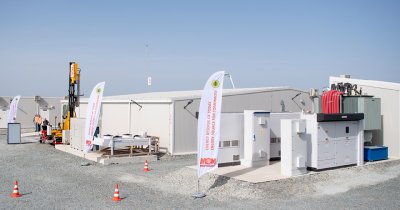In total, 60 projects entered the competition, their total value culminating to around 2 billion euros or 1% of Romania's GDP, a record for SCIA.
One important subject for the event was the future of Romania's energy system, specifically how we can ensure a clean energy supply for the country's capital city. The subject was debated by Sebastian Burduja, Minister of Energy, and Claudiu Crețu, General Manager, Electrocentrale București (ELCEN).
"Romania has a great chance to be positioned in an optimal spot to benefit from this energy revolution", said Sebastian Burduja last year, during the Climate Change Summit in 2023, adding that the country's energy mix is very diverse. Hydro power is one of its main energy sources, covering a third of the nation's power, while the nuclear reactors at Cernavodă cover an additional 20%.
At the beginning of 2023, the Romanian government said that SMRs are "the newest, safest and cleanest nuclear technology."
Romania's collaboration with the US goes under the name of "Project Phoenix" and it aims to use the revolutionary nuclear reactors in order to replace polluting coal-fired plants.
The first such modular reactor which will be installed in Romania is to be implemented in Doicești, a town north of Târgoviște. Six modules will make up an entire plant there and this stage received 254 million USD in funding. The benefits aren't only for the energy sector, though, as 2.000 jobs will be created, but also 4 million tons of CO2 emissions will be avoided every year.
"I would like to mention that out of all nuclear reactors on the planet, those found at Cernavodă are number 1 and 3 regarding safety in operation. So out of the hundreds of nuclear reactors on the planet", said Claudiu Crețu at the event that took place last week.
It is important to mention the fact that the Ministry of Energy works together with ELCEN and the US Department of Energy (DOE) to implement modular nuclear reactors. This is a next-generation technology that can help provide electricity or thermal power without the need of the extensive works associated with traditional nuclear plants.
Another collaboration project between the Ministry of Energy and DOE looks at the usage of geothermal resources near Bucharest, which could be an important source of thermal and electric power for the citizens of the capital city, especially as new housing projects are also continued.
"Another important subject to talk about which isn't quite in our knowledge, but which we can provide help for, is biomass and using waste streams, just like civilized Western cities can", the General Manager of ELCEN mentions. Copenhagen, Denmark's capital city, is one of the cities in Europe that embraced using these resources and integrates them in the national energy system as cleaner alternatives.
"In order to do this, we need dialogue, an integrated vision, we need stakeholders, which are companies and the town halls, to sit at the same table, to have the same strategy, vision and especially execution plan", ELCEN's General Manager added.
The minister of energy and ELCEN's General Manager also discussed during the event about the fate of an important power station found in District number 6 in Bucharest.
In just a few weeks, the two representatives said to expect the upcoming plans to modernize the area, which will include the headquarters for the Ministry of Energy, ANRE and ELCEN. The constructions will follow the most recent standards for energy efficiency and net-zero building, which are even more symbolic for Romania's energy industry.
Claudiu Crețu mentions that among the plans to modernize Bucharest's energy sector also lays the improvement of the power stations, through the introduction of energy storage and adapting the stations to the hydrogen network, considered the future on a European level for generating energy and heat, among other things.
Since many bus and trolleybus lines in Bucharest have longer stops at several power stations in the city, that's where energy storage could serve as charging points for these vehicles, as more of them will switch to electric powertrains.
Modernizing these power stations, as states Claudiu Crețu, could take anywhere from 4 to 5 years.
At the same time, Sebastian Burduja mentioned the recent retrofitting of Station North, the largest electric station in Bucharest, which serves 75,000 usage points. The building's occupation rate dropped by 60% following the introduction of new machines, which are more compact and modern.
Solar and wind power are two forms of renewable energy that show great interest in Romania, with the targets claimed in front of the European Union being of 950 MW of cumulated installed power.
ARSC awarded 39 companies in 8 categories across various sectors, from mobility, urban transport, development and infrastructure, including data security, which showed an increase in smart development compared to the previous years.
 Mihai - Cristian Ioniță
Mihai - Cristian Ioniță












Any thoughts?